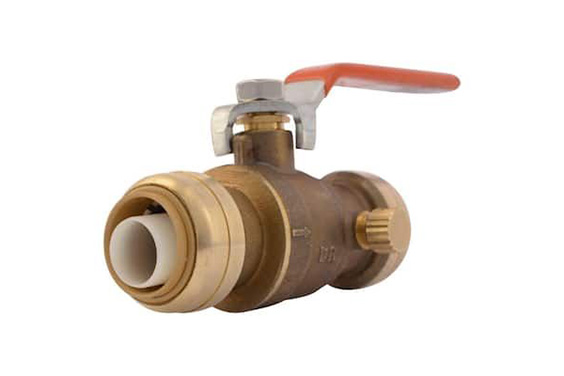A leaking refrigerator water line shut off valve can be a real nuisance. If you’re lucky, the leak is just a small one that you can easily fix with a new washer. But if the leak is more severe, it may require more extensive repairs. In this blog post, we’ll show you how to troubleshoot and fix a refrigerator water line shut off valve that’s leaking. We’ll also provide some tips on how to prevent future leaks. Let’s get started!
Refrigerator Water Line Shut Off Valve Leaking
- Shut off the water supply to the refrigerator and disconnect the water line from the valve.
- Remove the screws holding the valve in place and remove it from its mounting bracket. There may be a plastic or metal retainer ring holding it in place. This is common on older refrigerators and you will need to pry it out of place with a screwdriver or other flat blade tool.
- Clean all debris from around the valve using pliers, compressed air, or a vacuum cleaner with a brush attachment if necessary. Make sure that all dirt, grime, and food particles are removed so that they don’t get sucked into your new valve when you install it. You can also use a degreaser like Simple Green to clean out any gunk that remains in the area after you have blown it out with compressed air or vacuumed it away with your brush attachment on your vacuum cleaner (make sure to wear rubber gloves).
- Insert the new shut off valve into its mounting bracket or onto its existing retainer ring and secure it in place by replacing its retaining screws (if applicable). If your refrigerator has an internal water line shutoff, simply connect your new shutoff valve inline between this internal shutoff and your water supply line (see diagram below for an example of how this would look). If there is no internal shutoff, connect one end of your new hose directly to your water supply line and then connect the other end of this hose to your new shutoff valve’s input port (see diagram below for an example of how this would look).
How do you change a water shut-off valve on a refrigerator?
Most refrigerators have a water shut-off valve located behind them. To change the valve, first turn off the water at the main shut-off valve for your home. Then, remove the screw that holds the valve in place and pull it out. Next, insert the new valve into the hole and screw it in place. Finally, turn the water back on at the main shut-off valve and check for leaks. If there are any leaks, simply tighten the screw on the new valve until they stop. With a few simple tools and a little bit of know-how, changing a water shut-off valve is a quick and easy process.
How do you know if your refrigerator water valve is broken?
If your fridge is not dispensing water or ice, or if the water pressure is low, it may be due to a broken water valve. While this is not a common issue, it is one that you will want to get fixed as soon as possible, as a broken water valve can lead to bigger problems down the road. Fortunately, there are a few telltale signs that can help you troubleshoot the issue. For instance, if you notice water leaking from the back of your fridge, it’s likely that the water valve is damaged. Another sign to look for is low water pressure when dispensing from the door. If you suspect that your fridge’s water valve may be broken, it’s best to call a professional for help. A broken water valve is not something you want to try to fix on your own.
How do you test a refrigerator water valve?
Before testing the refrigerator water valve, unplug the refrigerator or turn off the circuit breaker for the fridge. Locate the water line coming into the back of the refrigerator. Use a multimeter to test continuity through the water valve.
If there is no continuity, then the valve is not working and will need to be replaced. If there is continuity, then turn on the water supply and check for leaks at the connections. If there are no leaks, then the valve is working properly.








